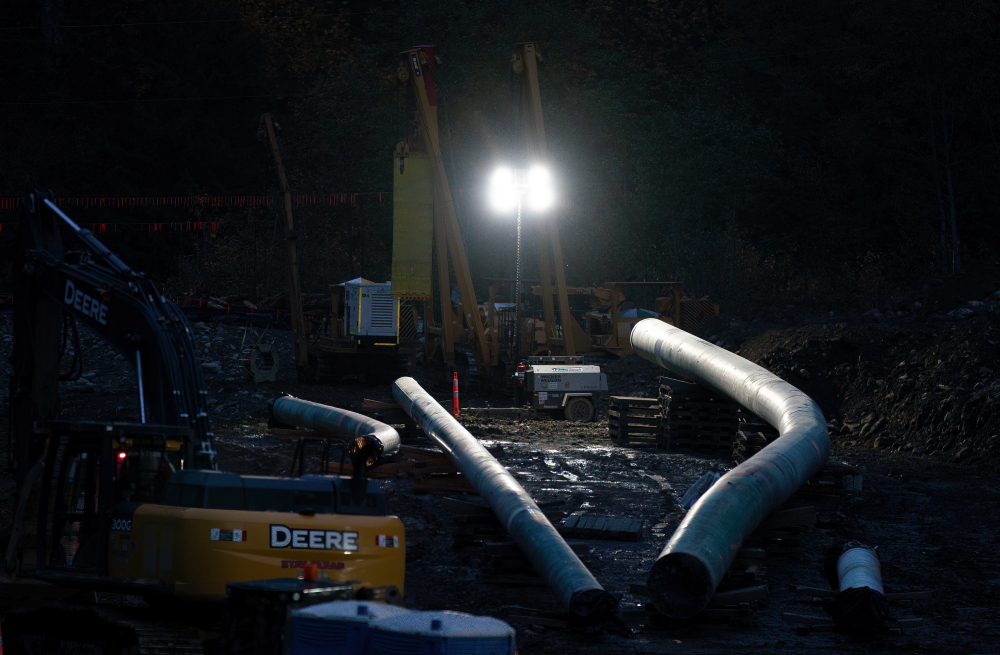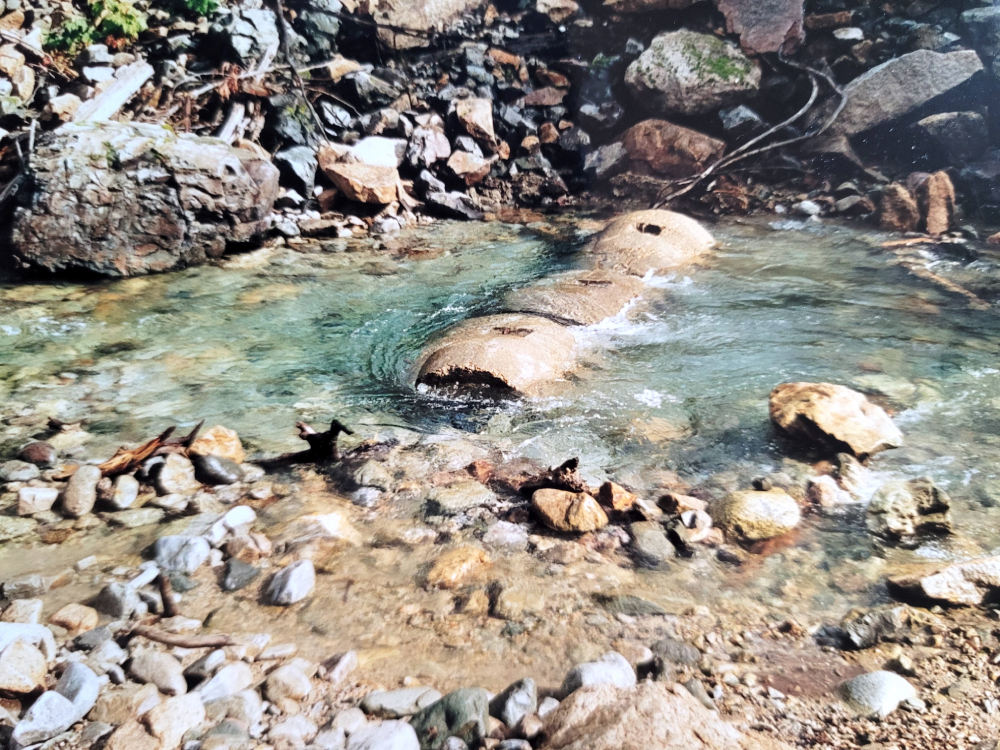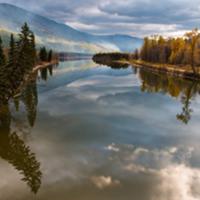I will limit my comments to the current state of anarchism in Canada, as our anarchism is more closely associated with socialism of the European left than with the libertarian/liberal right wing individualist traditions coming out of the United States.
And it is here we must make a differentiation, because while in the US the Libertarian movement is identified with republican liberty, individualism and the free market, with a corresponding development in the American anarchist movement with a heavy emphasis on Nietzche, Stirner and individualistic anarchism. Such has not occurred in Canada to the same degree. So American libertarianism, right and left, has had little impact in the Great White North.
Oh sure there is a Libertarian Party of Ontario, and various neo-conservative pseudo libertarian think tanks, the Fraser Institute, the National Citizens Coalition, Market Institute of Atlantic Studies, etc. but you cannot separate these from their business class interests and their political party; the Canadian Alliance.
Objectivism and Ayn Randism, is a miniscule movement on University Campuses. It appeals to Engineers who believe Rand is a philosopher of some renowned because they failed to take any philosophy courses, they believe she is a great novelist, because they didn’t take any English classes either. An equal amount of Engineers that read Rand read Technocracy.
However during a recent anti-war demonstration in Edmonton the capitalist libertarians clustered to denounce War and Socialism! Considering they were less than a handful, in a sea of 20,000 mostly social democrats, those that believe in Socialism pitifully outnumbered them. And they were even outnumbered by members of the IWW as well as the Anarchists who carried the banner: No War but Class War. A statement more startling to the mass of demonstrators than the Libertarians presence, this was because it was an Anti-War march, with hippie feel good pacifism as ideology.
On the left in Canada we have a mish mash of so called anarchists and anti-authoritarian socialists, and I think it is here we need to clear up who is calling themselves what these days and see if they really are anarchists or just non aligned leftists.
We have the anti-capitalist /anti-globalization movement, which has ties to NGO’s and unions. Many self-described anarchists are also members of one of these NGO’s the nationalistic statist Council of Canadians. This anti globalization organization was founded by Mel Hurtig, a nationalist Liberal, and is run today by his heir apparent the non elected Maude Barlow, she too is a nationalist Liberal. It was to be the nucleus of a new Nationalist Social Democratic political party much like the New Political Initiative (NPI). The lack of democratic organization and top down personality cult does not hinder the involvement of young activists.
In relation to the anti-capitalist movement these activists are not really anarchists as much as non-aligned leftists. They have no party to join so they start their own. Complete with mutual inter personal ground rules and common ideological viewpoints, the non-aligned leftist is not an anarchist as much as a consumer of left wing viewpoints, many undeveloped and undefined.
This was clear from the Sven Robinson NDP Leadership campaign and in some aspects the recent Layton leadership campaign. In the case of Sven Robinson, thousands of young activists, many calling themselves anarchists mobilized in support of Sven’s leadership. They swelled the NDP ranks with young people, who were then smashed and disenchanted when Sven without the courtesy of ‘consulting’ with his troops, crossed the floor and admitted defeat. The impact of this sellout was enormous and created an atmosphere of alienation and disenchantment with social democratic electoral politics that created the New Politics Initiative. But again the NPI while relying on these young activists, relies on a self appointed hierarchy of leaders, Judy Rebick, James Staford and yes Sven Robinson. These media stars are professional paid agitators promoting direct democracy, while practicing politics as usual.
Pierre Ducasse the Quebecois candidate for NDP leadership spoke from a left libertarian position, shocking many, especially with his call to end the parties focus on statist solutions and look at the libertarian alternative of worker/producer, consumer cooperatives. Here was a libertarian candidate for Leader of the NDP, one who faced opposition from the trade union and left establishment in the NDP.
Within the New Socialist Group (NSG) the anarchist milieu did not arise as a left wing critique of founding theoretician Dr. David McNally and his criticisms of anarchism, but as direct action anarchists who support black bloc actions at demonstrations.
Another common thread amongst these self-described anarchists, is that of a fetish for Direct Action and Consensus politics. Were the recent black bloc attacks against the Gap, in Montreal during the August WTO meeting, a protest of their use of Sweat Shop labour or because the Gap is merchandising the circle A and protestor chic clothing. It has its own line of protest chic which happens to be exactly what wearing black and covering your face with a balaclava has become. The social image of the black bloc is too reminiscent of the black shirts of Germany, and in many ways its anonymity and tactics are more akin to fascism then anarchism.
The black bloc vandalism is not followed by any communiqué, we are supposed to telepathically grok what the meaning of their actions are. And in media-ated society this image is that of the old style anarchist bomb chucker. This was also the case of the three activists who pied Ralph Klein, of course this was no Riechstag fire, but like their predecessor Milus Van der Lube, they too failed to issue a communiqué as to what precipitated their actions.
While Cesar may deserve his due, the masses side with the leader when he is attacked which is why fascists engage in armed actions, to increase the calls for law and order and the fuerher principal. Let us not forget the French fascist movement of the 1970’s was known as Action Direct.
Fascism is reactionary content combined with revolutionary emotion. Wilhelm Reich
The fact is that the black bloc is imitating the 1970’s autonomists, who themselves degenerated into Laroucheite style attacks on workers on picket lines. The Italian autonomists attacked striking workers claiming they were the labour aristocracy and the autonomists were the voice of the unemployed, the lumpen, Negri’s “new class” not the mass worker but the social value worker.
Direct Action is not vandalism or destruction of property during demonstrations to make the demonstrations more radical, it is the use of the sit down strike, the use of occupations and squatting, the taking of action, the wild cat strike. If Starbucks workers walked out in a wild cat strike that would be direct action, the trashing of the storefront window is mere vandalism.
Amongst the self-defined anarchist youth are several tendencies, the individualistic, ironically tend to see process as most important, as well as lifestylism. All the old shit of the New Left seventies is back again, communal love fests, white skin privilege, and the need for a nudist vegan bicyclist lifestyle, with a dash of consensus building.
Ah consensus, the anarchists answer to the tyranny of parliamentary procedure, consensus versus Roberts rules. Again we return to the seventies, with this Anti-Mass critique. These anarchists insist all meetings must drag on for hours as each person is asked their opinion, fingers waving in the air in silent appreciation of a point well made, looking a lot like a born again revival meeting only lacking the whoo whoo sound effects of the three stooges. The only problem is that every political point is heard and never critiqued. The local anarchists are great at building united fronts with disparate nationalists, patriarchal religious view, liberals and leftists, but never have their own political position.
The popular Consensus process is not left wing but actually arises from the work of Edward Demming and the Team Management theories of the eighties that were imposed on the working class in order to dumb down and multitask work. There is the rub, the consensus model is used to get workers to buy into being part of a team, a team that opps has to cut back hours of work, numbers of workers, workers self management subverted by capitalism becomes the self management a thousand cuts, but hey we all feel good because we all had input and we reached consensus. Fingers wave whoo whoo.
So where do we go from here? In the anarchist milieu in the US the debate is on that anarchism is anti politics, anti-organization. With the recent anti-war movement the right wing libertarians are suddenly abandoning their neo-conservative/neo-liberal allies, and wanting a dialogue with the anarchist left.
Since Canada is a social democratic country, with a philosophy of social justice, collective as well as individual rights, the appeal of libertarianism comes up when some one tries to tell us where we can smoke, or tries to impose their rules on us. For most of the time, we are in many ways indistinguishable from the rest of the left, except during elections, and even then many anarchists, non-aligned leftists, still hold their noses and vote for the NDP, or Greens, or CP. Anarchists are involved in the NPI but the contradiction of a self appointed leadership of the same old leftwing professional revolutionaries still has not been confronted by those participating in this project.
We need a debate and a dialogue as to what the hell it means to be an anarchist in these movements, what direct action really is ( a good example would be the wave of sit down strikes that spread across North America in 1937, rather than the current tendency to trash the
G@P).
We need to look at the appeal that Pierre Ducasse had with his libertarian economic proposals of worker/consumer coops within the NDP milieu.
Where anarchists belong to existing political parties, socialist, green, NDP, etc. and in the unions, we need to ask what it is we are doing and why.
Within the broader social movements, struggles against poverty and homeless activism, animal rights, feminism, gay rights, paganism, etc., again we need to articulate what anarchism means in these movements.
So far the articulation of anarchism on the left has been the nihilist response of Marlon Brando in the Wild Ones; “What’cha rebelling against Johnny?”
“ I dunno, what’cha got?”
Published in
Any Time Now, Winter 2003 as part of a larger discussion on
Anarchism and the Left.
socialism
labour
Canada
Politics
anarchism
feminism
political






